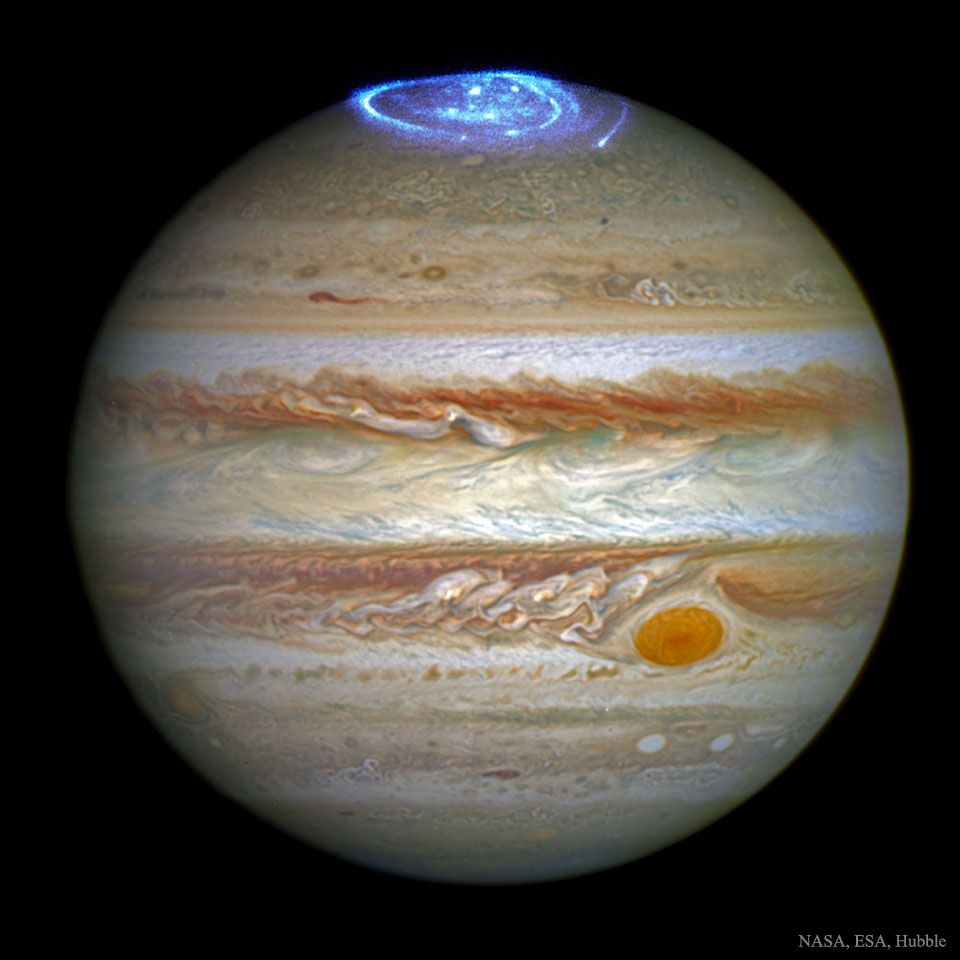Aurore sur Jupiter
Jupiter has
aurorae.
Like Earth, the
magnetic field of the gas giant funnels
charged particles released from the Sun
onto the poles.
As these particles strike the atmosphere,
electrons are temporarily knocked away from existing gas
molecules.
Electric force attracts these electrons back.
As the
electrons recombine to remake neutral molecules,
auroral light is emitted.
In the
featured recently released composite image by the
Hubble Space Telescope taken in
ultraviolet light, the
aurorae
appear as annular sheets around the pole.
Unlike
Earth's aurorae,
Jupiter's aurorae include
several bright streaks and dots.
Jupiter's Great Red Spot is visible on the lower right.
Recent
aurorae on Jupiter
have been particularly strong -- a fortunate coincidence with the arrival of NASA's
Juno
spacecraft at Jupiter last week.
Juno was able to monitor the
Solar Wind as it approached
Jupiter,
enabling a better understanding of aurorae in general, including
on Earth.





